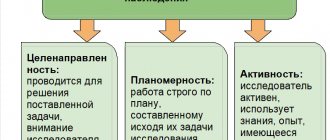There are different models of psychological counseling, different theoretical approaches, and there are a variety of ways to conduct an initial consultation. Here we will present a generalized version of conducting an initial consultation with a client, formulated in the form of simple principles, a kind of algorithm that can be used regardless of the consultant’s theoretical preferences.
The first meeting with a client always includes a number of tasks. The three main, closely interrelated tasks of the initial consultation include interpersonal, diagnostic and therapeutic.
Interpersonally, the counselor's job is to establish a relationship with the client. The client, first of all, needs the consultant’s sincere and natural desire to get into contact with him. The most important condition for the emergence of psychological contact between the client and the consultant is the quality of presence, that is, the ability of the consultant to non-verbally express involvement in the conversation. Since congruence and naturalness are the exact opposite of presenting a façade, this counselor behavior serves as a model to encourage the client to present himself openly and spontaneously. Along with this, nothing contributes to the client’s self-disclosure more than the unconditional positive regard and empathy of the consultant. Unconditional positive regard involves nonjudgmental acceptance of the client's life experiences, as well as the expression of warmth and care. Empathy provides the client with a unique experience of emotional resonance and shared knowledge of how he experiences his life situation.
Diagnostically, the consultant's task is to identify the client's problems and working hypotheses about their nature. I am of the opinion that, regardless of education and theoretical orientation, the counselor cannot avoid the need to formulate hypotheses about the client's problems and make decisions about what needs to be done to improve the client's condition. In other words, in order to behave therapeutically, the consultant must first become a diagnostician. Diagnostic assessment, in my opinion, is useful to view as an ongoing process of inference that expands current knowledge about the client. This process starts already during the initial consultation, but it ends only with the end of the advisory relationship. Based on observations of the client’s behavior, tracking and understanding his own subjective impressions of interaction with him, as well as analyzing the content of the stories he tells, the consultant begins to build a working model of the client’s inner world and a therapeutic strategy suitable for this case.
And finally, the therapeutic goal of counseling is to create special conditions in a counseling situation through which the client has the opportunity to solve his psychological problems. The therapeutic goal of the initial consultation is to demonstrate by the consultant a therapeutic position - a direct response to the urgent needs of the client. Even when this is not obvious at first glance, it is worth remembering that very often a client seeks psychological help in a state of crisis. The client’s repeated attempts to independently solve one or another life problem failed, which forced him to seek psychological help. The client comes with hope, but in this very uncertain situation for him, he also experiences great anxiety. He passionately hopes for help in satisfying his urgent needs, but at the same time he fears that their open presentation will only lead to frustration and a repetition of the experience of pain and hopelessness so familiar to him. Feelings of hope and fear influence the client's behavior: he simultaneously reveals and hides his needs, and both can occur on both a conscious and unconscious level. The consultant’s task in this case is to demonstrate a willingness to respond emotionally to the client’s psychological needs and to treat with understanding manifestations of resistance to their expression.
Start of consultation
The way in which you begin the first meeting depends on the circumstances and condition of the client. In any case, at the beginning, if possible, it is worth communicating the purpose of the meeting, as well as the time it may take. After this you can ask the first question. To engage the client in telling a story about themselves, start with open-ended questions that cannot be answered “yes” or “no,” for example, “Why did you decide to see a psychologist? or “Where would you like to start?” If the answer to the initial question is not detailed enough, you can formulate the following open-ended question: “Could you tell me more about this?”
A good way to establish contact with a client is encouragement. Encouragements—both nonverbal (nodding, friendly and interested facial expressions, etc.) and verbal (phrases like “Yes,” “I’m listening,” “Tell me more about this”) may seem trivial, but when appropriate When used in a conversational context, they stimulate the client's speech and encourage self-disclosure.
The initial phase of the consultation is a time of actively inviting the client to talk about the reasons that brought him to the consultation, but this does not mean that if there are pauses, the consultant should immediately fill them. Long pauses are really undesirable, as they can cause anxiety and irritation. During short pauses, the client usually feels that you are thinking about his problem, and often adds new significant information himself. During these natural breaks, it's helpful to summarize what you've learned so far to help you take a meaningful next step.
Carefully listening to the client's presentation of his problems and understanding their subjective picture, that is, how the client perceives and explains the problem, is one of the main tasks of the initial stage of consultation. You will help the client make his point when, through repetition and clarification of semantic and emotional messages, you consistently demonstrate your intention to understand them as accurately and completely as possible. Repeating the essence of what the client said, or just the key words of what the client said, encourages the client to uncover deeper levels of the problem and often leads to the expression of new complaints and dimensions of the problem. Each new complaint or dimension of the problem should be given special attention by the consultant. A willingness to consider new information ensures that the real reason for seeking help—the client's immediate needs—is not missed. By noting, clarifying and connecting complaints and details of the problem, the client and consultant jointly move towards its more general formulation, which will incorporate everything that was discussed earlier. From time to time it can be very useful to check your understanding by formulating what the client said in your own words and giving him the opportunity to correct your perception.
At the end of the initial phase of the conversation, make sure you have learned about the client's main complaints and ask: “Is there anything else that bothers you?” After this, it can be useful to summarize the complaints, that is, briefly list them, as well as the ideas and feelings that accompany them. The function of summation at this stage is to summarize the client’s complaints and his vision of the current situation.
Closely related to the summation technique is the problem of recording during a session. Recording the client's complaints, keywords and main topics in writing, that is, short notes, can be very useful and many successfully use them in their work, while remaining involved in the contact. However, not everyone succeeds in this. Careful recording, which, of course, could be very useful for subsequent reflection on the material, is unlikely to contribute to establishing contact with the client - the main task of the initial consultation. It is unlikely that you will trust a consultant who pays more attention to his notebook than to the client. Therefore, perhaps, you should either take short notes or avoid taking notes altogether, at least during the first meeting. If something very important comes up that you don't want to forget, you can interrupt the client and say, “Would you mind if I write down these details? They are important and I wouldn't want to miss them." Once you've finished writing, put down your notebook and pen and nonverbally demonstrate your willingness to renew contact.
The appropriate level of activity should also be determined at the initial stage of the conversation. In the first minutes of the conversation, after information structuring the situation and an open question about the reasons for the request, it is useful for the consultant to take a passive position for some time. When the client speaks, one should listen and plan the counseling strategy, particularly regarding the degree of control over the conversational process. For example, with a talkative or distracted client, you should be more active so that the consultation time is not eaten up by unimportant details. Conversely, with a client who consistently presents the problem, enriching it with more and more new dimensions, control on the part of the consultant may be minimal. Here, active listening and rare, in-depth exploration of the problem by the consultant’s remarks would be most appropriate. However, in this situation, you should not forget about the limitation of time that you can devote to researching certain topics.
Individual plan for providing psychological assistance
Plan for individual work of a psychologist with children with disabilities
The goal of psychological support for a child in the educational process is to ensure his normal development (in accordance with the norm of development at the appropriate age).
Tasks:
- Determining the most adequate ways and means of developmental and correctional work with a child.
- Prediction of child development and learning opportunities based on identified developmental characteristics
- Providing individual psychological and pedagogical assistance to children with disabilities.
- Providing methodological assistance to parents and teachers carrying out the educational function of children with disabilities.
- Tracking the dynamics of development of children with disabilities.
System of comprehensive psychological and pedagogical
accompanying children with disabilities
PPK specialists directly involved in the examination and comprehensive support of children with disabilities:
- Educational psychologist
- Social teacher
- Teacher speech therapist
- Classroom teacher
- defectologist
Main stages:
- Work with documentation, selection of diagnostic minimum for children with disabilities, study of medical history.
- Psychological, medical and pedagogical examination of the child using methods by various specialists, in-depth psychodiagnostics, determination of the resource state, the subject of alignment, areas of special attention.
- Recommendations for working with a child with disabilities, choosing parenting and teaching strategies.
- Development of a strategy for accompanying the child, an individual plan for psychocorrection.
- Tracking the dynamics of development of children with disabilities.
Implementation plan for individual-oriented
work of a teacher-psychologist with children with disabilities
| № | Month | Direction of work | |
| 1 | September | 1. | Diagnostic examination |
| psychologist for general | |||
| psychophysical development | |||
| 2. | Examination of children with disabilities | ||
| deep violations in | |||
| PMPk, collegial opinion | |||
| and recommendations | |||
| 3. | Selection of psychocorrectional | ||
| methods, compilation of a comprehensive | |||
| psychocorrectional programs | |||
| impact | |||
| 2 | October | 1. | Discussion of PMPK recommendations, |
| familiarization with the contents | |||
| programs for teachers and parents | |||
| child with disabilities | |||
| 2. | Implementation of correctional | ||
| development program | |||
| 3 | November | 1. | Interim check |
| efficiency | |||
| psychocorrectional influence | |||
| 2. | Interview with teachers and | ||
| parents about emotional | |||
| condition of children with disabilities | |||
| 4 | December | 1. | Determination of abilities |
| child with disabilities | |||
| 2. | Psychological and pedagogical | ||
| counseling parents on | |||
| issues of education and training | |||
| child with disabilities | |||
| 5 | January | 1. | Psychotherapeutic work on |
| alignment or development | |||
| compensatory skills | |||
| 2. | Development of self-concept, | ||
| self-knowledge of a child with disabilities | |||
| 6 | March | 1. | Development of intellectual |
| abilities | |||
| 2. | Medical consultation | ||
| teachers and parents | |||
| tracking development dynamics | |||
| child with disabilities | |||
| 7 | April | 1. | Development of creative abilities |
| child with disabilities | |||
| 2. | Performance check | ||
| psychocorrection program | |||
| 3. | Psychological | ||
| consulting teachers | |||
| child with disabilities | |||
| 8 | May | 1. | Additional individual |
| work based on results | |||
| diagnostic examination, | |||
| defining goals and objectives for | |||
| next school year | |||
| 2. | Reflection | ||
Mid-consultation
The main task of this stage is to formulate hypotheses about the nature of the client's problems and test them by collecting additional information and applying appropriate trial interventions. If you get the information you need, maintain a minimum of control. If the client’s story has little substance, then it makes sense to take a more active position. Don't be afraid to exercise control. The client reacts normally when he is politely interrupted. Sometimes the client slips into unimportant topics or goes into too much detail on unimportant details. Although sometimes such insignificant topics can lead to significant experiences for the client, more often they only eat up the very limited time of the first meeting.
Monitoring the progress of the conversation is a manifestation of the consultant’s responsibility. Listening alone, even the most sensitive one, is in most cases not enough. Being active in limiting the content of the client’s speech and maintaining focus on certain complaints, topics, and specific life situations allows the consultant to formulate and test initial hypotheses regarding the nature of the client’s problems, thereby making the most of the potential for solving them.
When you are pursuing a particular line of research and important but unrelated information comes up, make a mental note of it and make sure you have completed the current topic before moving on to it. You can move on to a new topic using the following construction: “When you talked about .... You mentioned…., could you say more about that.”
Example
Consultant: When you talked about your feelings for your husband, you mentioned the death of your father. And this, it seemed to me, is very important for you. Could you tell me more about this?
Before delving into a new topic, it is important to complete the previous line of research. Getting carried away with a new topic is a common mistake, which sometimes leads to a confused and superficial understanding of the client’s problems.
In a situation where the client abruptly switches to presenting a new topic, a direct manifestation of control on the part of the consultant may look, for example, as follows: “I understand that this is important to you, but could you please return to what you said earlier about your problems at work , and tell about them?
Introduce new topics to the client so that he understands where the conversation is heading.
Example
Consultant: You mentioned quarrels with your mother. Therefore, I would like to now turn to a discussion of your family and the problems that are associated with it. We could probably start with your mother - could you tell me more about her?
Explore each new topic with the client: start with open questions, then, if necessary, use clarification, reflection of feelings, confrontation, interpretation and other techniques. The use of techniques in the first session is in the nature of a trial intervention. How a client responds to the counselor's trial interventions tells us the degree to which he is willing to use the therapeutic potential of counseling, that is, the tools that the counselor can offer him. As R. Sherman and N. Fredman accurately note, “each specific technique can simultaneously be considered as a psychodiagnostic test” (cited in: Navaitis, 1999). The extent to which a client responds to trial interventions reflects his level of openness-closedness, ability to get in touch with his feelings, ability to use a different point of view to understand his problems, and similar important factors in assessing the appropriateness of a particular type of psychological assistance.
Avoid jargon and clarify words and phrases that you do not understand and that may mean one thing to you but another to the client. Diagnostic and psychological labels should always be clarified. For example, if a client mentions depression, the counselor might say, “You said you were depressed. Could you describe in more detail exactly what you felt?"
When showing emotions, it is appropriate to show support and empathy, stimulating their expression. For example, “That seemed to upset you a lot at the time,” or “That decision seemed to be very difficult for you.” Such statements communicate to the client that, unlike most people, you are able to talk about their feelings. Make sure you are being empathetic and not likable. “I see how difficult it is for you to talk about this” is empathy. And “Oh, God, how unlucky you are” or “I don’t know how I would cope in this situation myself” is sympathy. The problem with sympathy is that it expresses a condescending attitude of the consultant and assumes a submissive role for the client. Sympathy is often perceived by the client as a sign of pity. Therefore, if a client mentions pity, you should explore whether you have switched from empathy to sympathy. Empathy is the expression of concern from one human being to another and the acknowledgment of their feelings, rather than simply an automatic reaction of sympathy and pity.
Speaking in the language of therapeutic interventions, the best techniques for expressing emotions are reflection of feelings (“There is disappointment in your voice. You felt that you had overcome all these problems, and suddenly a feeling of guilt and confusion appears”), feedback (“You have tears in your eyes”) and questions (“Could you say more about what makes you angry?”).











